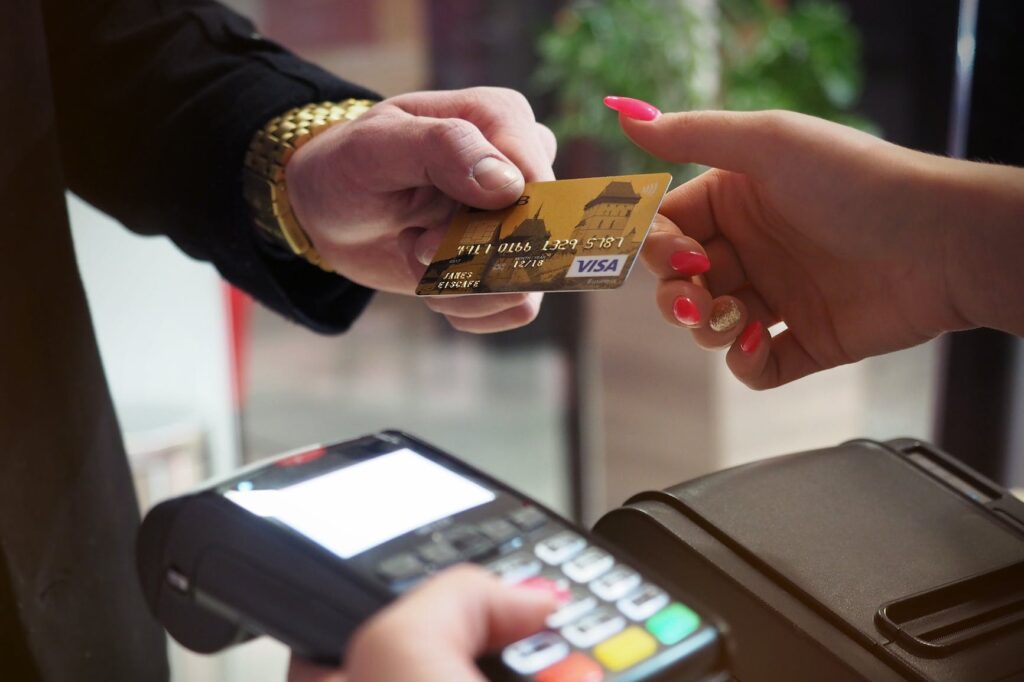Contents
Understanding OTP-Based Transactions
In the world of online transactions, OTP (One-Time Password) plays a crucial role in ensuring the security and integrity of financial transactions. Let’s explore what OTP is and how it works, as well as the importance of OTP for transaction security.
What is OTP and How Does it Work?
OTP, or One-Time Password, is a unique numerical code that is generated for a single transaction or session. It serves as an additional layer of security by verifying the authenticity of the user. OTPs are typically sent to the user’s registered mobile number or email address.
The process of generating an OTP involves a combination of factors, such as the user’s credentials and the transaction details. Once generated, the OTP is sent to the user, who then enters it into the designated field to complete the transaction. The OTP is valid only for a short period of time and can be used only once, hence the name “One-Time Password.”
By requiring users to provide an OTP during a transaction, financial institutions and online platforms can verify the identity of the user and ensure that the transaction is authorized. This adds an extra layer of security and helps protect against unauthorized access and fraudulent activities.
Importance of OTP for Transaction Security
OTP plays a vital role in transaction security by mitigating the risk of unauthorized transactions and identity theft. It provides an additional layer of protection beyond traditional username and password authentication.
There are several reasons why OTP is important for transaction security. Firstly, OTPs are time-sensitive and can only be used within a short period of time. This reduces the likelihood of intercepted OTPs being used for malicious purposes.
Secondly, OTPs are unique for each transaction or session. This means that even if a malicious actor obtains an OTP, it cannot be used for any other transactions. This adds an extra level of security against replay attacks, where intercepted credentials are used to gain unauthorized access.
Lastly, OTPs are often sent to the user’s registered mobile number or email address, which adds an additional factor of authentication. This ensures that the OTP is received only by the authorized user and helps prevent unauthorized access by someone who may have obtained the user’s username and password.
It’s important to note that OTPs should not be shared with anyone, including family members or bank employees. OTPs are meant to be entered online and do not need to be shared verbally or through writing. By keeping your OTP confidential, you enhance the security of your transactions.
Financial institutions also implement various security measures, such as biometric authentication and two-factor authentication, to ensure secure transactions. These measures, combined with the use of OTPs, help verify the identity of the user before processing any transaction. Additionally, institutions employ robust security protocols, including encryption and regular security audits, to safeguard customer data and prevent fraudulent activities (FasterCapital).
Understanding the significance of OTP-based transactions and following best practices for keeping OTPs confidential are essential for maintaining transaction security. By safeguarding your account information and promptly reporting any suspicious activity, you can protect your funds and ensure the security of your financial transactions.
OTP-Based Cash Withdrawal at SBI ATMs
SBI (State Bank of India) has introduced an innovative service that allows customers to withdraw cash from ATMs without using a physical card. This service leverages the use of OTPs (One-Time Passwords) to enhance transaction security and convenience. In this section, we will explore SBI’s OTP-based cash withdrawal service, the process of withdrawing cash using OTP at SBI ATMs, and the security measures in place to protect customers’ transactions.
SBI’s OTP-Based Cash Withdrawal Service
SBI’s OTP-based cash withdrawal service provides customers with a cardless cash withdrawal option, allowing them to withdraw cash using their account number and a 6-digit OTP sent to their registered mobile number. This service is available 24×7 at SBI ATMs, providing customers with flexibility and convenience in accessing their funds.
How to Withdraw Cash Using OTP at SBI ATMs
To withdraw cash using OTP at SBI ATMs, customers need to follow a simple step-by-step process:
- Visit an SBI ATM and select the “Cardless Services” option on the main screen.
- Choose the “OTP” option from the available menu.
- Enter your account number using the ATM’s keypad.
- You will receive a 6-digit OTP on your registered mobile number.
- Enter the OTP received on your mobile number using the ATM’s keypad.
- Proceed to enter the desired amount you wish to withdraw.
- The ATM will dispense the cash as per your request.
It’s important to note that this service is available for transactions between Rs 1000 and Rs 10,000, and the amount should be entered in multiples of Rs 100. Customers can make multiple transactions in a day, but the total amount withdrawn should not exceed Rs 10,000 (Economic Times).
Security Measures in SBI’s OTP-Based Cash Withdrawal
SBI has implemented several security measures to ensure the safety of customers’ transactions. The OTP is sent to the customer’s registered mobile number, adding an additional layer of verification to the transaction. This ensures that only the authorized account holder can initiate the cash withdrawal.
Customers are advised to keep their OTP confidential and not share it with anyone. The OTP is valid for a limited period, and sharing it with others may compromise the security of the transaction. It’s essential to follow best practices for keeping the OTP confidential and safeguarding your account information, as outlined in our section on Best Practices for Keeping OTP Confidential.
By offering this OTP-based cash withdrawal service, SBI aims to provide an additional layer of security and convenience to its customers. This service eliminates the need for a physical card and allows customers to access their funds easily using their account number and OTP. With the implementation of secure measures, SBI ensures that customers can conduct their transactions safely and securely.
OTP-Based Withdrawal for Online Transactions
When it comes to withdrawing money for online transactions, there are various methods available that utilize an account number and OTP for security purposes. These methods provide convenience and security for users who want to access their funds electronically. Let’s explore some of these options:
Withdrawing Money Using Account Number and OTP
Online money transfer services such as Zelle or Venmo allow you to withdraw money from a savings account using just an account number and an OTP. These services enable instant transfers to another person by entering their email address or mobile number, without requiring additional information beyond the recipient’s account number. A verification code sent to their phone adds an extra layer of security.
Linking your savings account to secure online payment platforms like PayPal also facilitates withdrawals using only an account number and OTP. As long as the recipient has their account details linked to their platform account, seamless transactions can be made (Forbes).
Secure Online Payment Platforms
Utilizing secure payment methods like Apple Pay or Google Pay allows you to send money using only an account number and an OTP. These platforms streamline the withdrawal process, eliminating the need for physical cards or additional authentication measures. By ensuring the security of your account details and transactions, these payment platforms offer a convenient and safe way to withdraw funds electronically (Forbes).
Cardless Cash Withdrawal Options
Some banks provide cardless cash withdrawal options through their mobile apps. These features allow you to withdraw money from ATMs using just your account details and a verification code sent as an OTP to your mobile device. This method provides an added layer of security and convenience, ensuring that you can access your funds without the need for a physical card (Forbes).
By taking advantage of these options, you can withdraw money for online transactions using your account number and OTP. Whether it’s through online money transfer services, secure payment platforms, or cardless cash withdrawal options, these methods offer a secure and efficient way to access your funds electronically. It’s important to remain vigilant and safeguard your account information to ensure the security of your transactions.
Enhancing Security for Transactions
To ensure the utmost security for your transactions, it is crucial to follow best practices and take necessary precautions. Here are some key measures to enhance the security of your transactions:
Best Practices for Keeping OTP Confidential
One of the essential security measures for safe transactions is to avoid sharing One-Time Passwords (OTPs) with anyone, including family members or bank employees. OTPs are meant to be entered online, and they don’t need to be shared with anyone verbally or through writing (FasterCapital). Keep your OTPs confidential and avoid sharing them via email, SMS, or other communication channels. This helps protect against unauthorized access to your accounts and minimizes the risk of fraudulent activities.
Safeguarding Your Account Information
Another important aspect of transaction security is safeguarding your account information. It is crucial to keep your account numbers confidential and not share them with anyone. By keeping this information private, you can prevent unauthorized access to your accounts and protect your funds from potential threats. Avoid storing your account numbers in easily accessible locations or sharing them over insecure networks.
Additionally, it is advisable to regularly monitor your account statements and transaction history. By reviewing your financial activity, you can quickly identify any suspicious transactions and report them to your financial institution. Promptly reporting any unauthorized activity can help prevent further losses and ensure the security of your account.
Role of Financial Institutions in Transaction Security
Financial institutions play a critical role in ensuring the security of transactions. They employ robust security protocols to safeguard customer data and prevent fraudulent activities. These measures include encryption, secure networks, firewalls, and regular security audits to maintain the integrity of the banking system. By partnering with reputable financial institutions, you can have confidence in the security measures they have in place to protect your funds and personal information.
In case of any suspicious activity or unauthorized transaction, it is essential to report it to the bank immediately. Financial institutions have dedicated teams that handle fraud-related incidents and can assist you in resolving any security concerns. By taking prompt action, you can protect your funds and ensure the security of your account.
By following these best practices and being vigilant about transaction security, you can enhance the safety of your financial transactions. Remember to keep your OTPs confidential, safeguard your account information, and partner with trusted financial institutions. By taking these precautions, you can have peace of mind knowing that your transactions are secure and your funds are protected.




